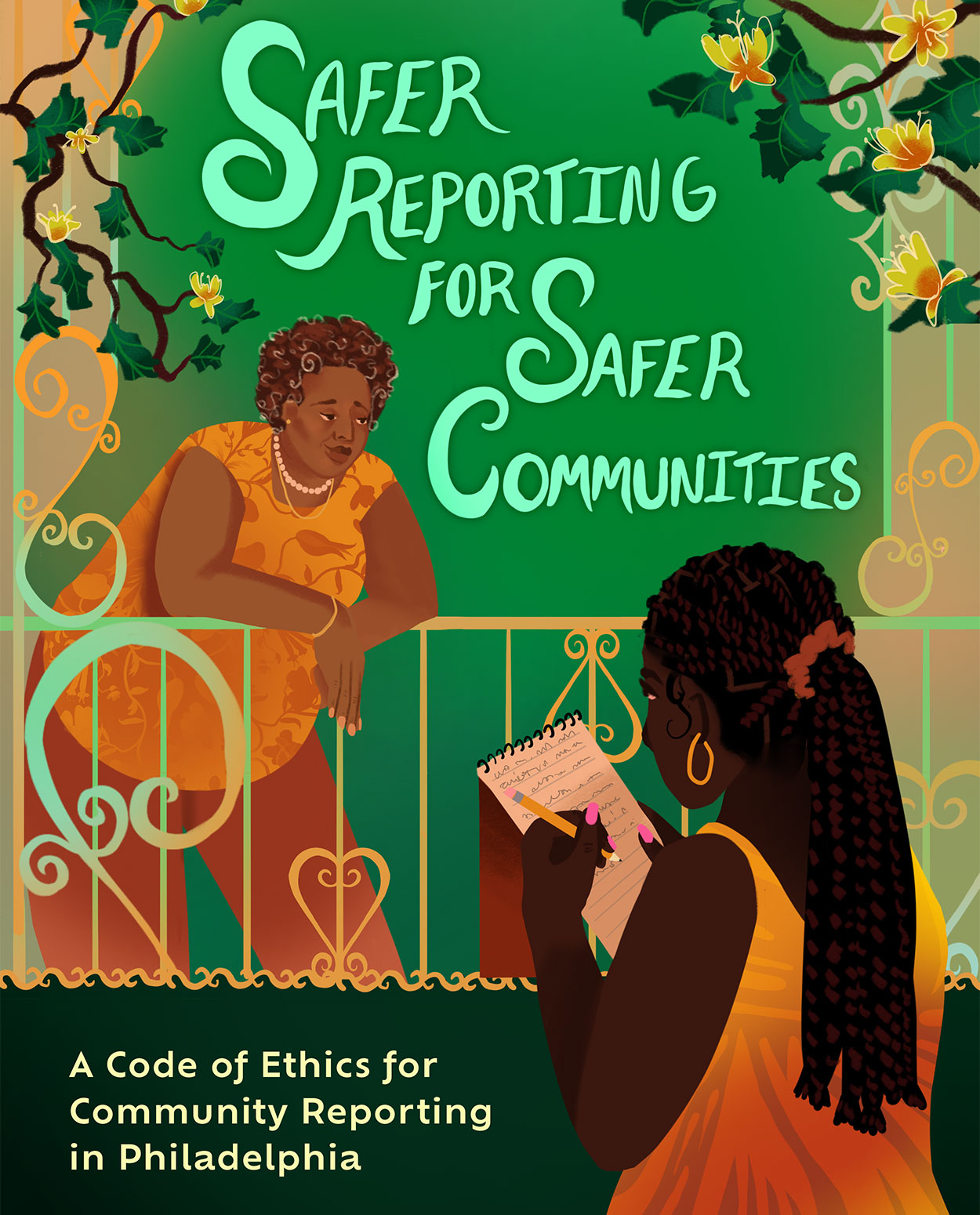Code of Ethics
Safer Reporting for Safer Communities:
A Code of Ethics for Community Reporting in Philadelphia
What would journalism look like if we embraced the storytelling ways of impacted communities instead of marginalizing them? What would happen if we centered practices from Black and Brown storytellers and media ethicists? Enter the Philadelphia Safer Journalism Project.
We see the need for ethics that reflect the values of our communities, which have historically been excluded from conversations about journalism practices. We do not seek to make a code that’s impractical or perfect; we have created a code of ethics we can be accountable to. This code of ethics grew out of a small cohort of Black and Brown storytellers who aim to foster more community-led news about public safety. Over the course of a year, we aligned values and co-developed practices with community journalists, media ethicists and mutual-aid organizers who joined us as guest contributors.
Explore the Code of Ethics
Our collaborators designed this code of ethics for editorial teams: reporters, producers, photographers, news directors, editors and so on. Check out this in-depth overview to see our full recommendations. This is an evolving document, and more updates are coming in the future!
This is a list of our primary principles. We have more to offer, and we hope you will explore the expanded version of this code, which provides more context and more recommended practices.

Active listening is necessary — it produces results that make it compelling and valuable for all parties in a conversation, including storytellers and sources. Listening to sources and communities deeply and with care should be the first step to your work.
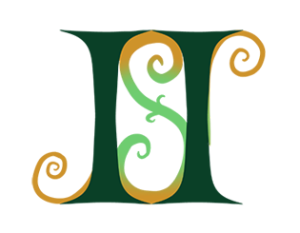
Ensure accuracy. Verification is a must.
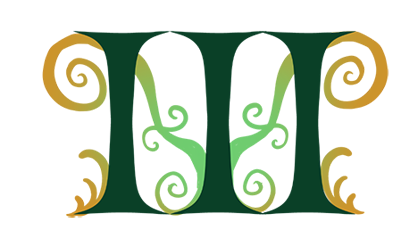
Move past binary thinking. Humans have many perspectives, and conflicts may have many sides. “He said/she said” can be reductive, untruthful and polarizing.

The news should reflect the communities it serves, equitably and with an intersectional lens. This should be documented on an ongoing basis with accountability measures to avoid bias or erasure.
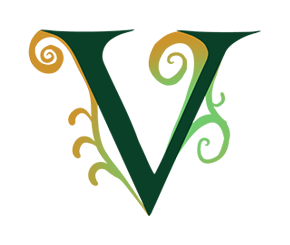
All sources deserve respect and transparency. News storytellers should set expectations and share potential outcomes openly and honestly, keeping in mind that power dynamics exist in reporting and impact how stories are told.
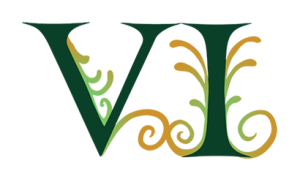
Storytellers should come from the communities they serve.
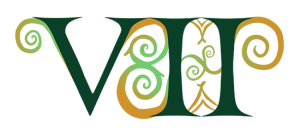
All humans have biases, which means humans can’t be purely objective. We can instead be rigorous, transparent and fair — and disclose our biases.
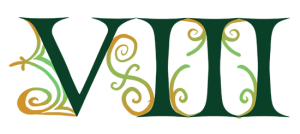
The relationship to news consumers should be a caring one, like mutual aid, that meets people’s information needs and includes resources to improve their lives and their reading/listening/viewing/felt experiences.

Storytellers must be accountable to the communities they serve, with these communities leading the conversation on what accountability looks like.

Build a stakeholder wheel. Include all of the stakeholders, but look for who doesn’t have power and consider how you can center them.

Take the time to evaluate the structural systems of power and how they are showing up in the lives of the people in the story.

There’s a responsibility to balance public and individual perspectives with facts. Prioritize all the relevant facts, including the facts on interventions to violence.

Refrain from assigning morality. Narratives that label some people as good and others as bad don’t reflect life’s complexities.

Approach every living being in the story with care, including people who have committed harm.

Reduce harm at all costs. Avoid dehumanization at all costs. Implement media harm reduction tactics.

Ask questions of the people and groups who can answer them appropriately.

Expertise shouldn’t be determined by colonial institutions, but instead by the best knowledge on a topic, regardless of a person’s status. Expertise from within the community is crucial to getting the story right.

Complicate the narrative: Show how issues exist across time and space, with nuance, solutions, history, context and root causes. Don’t just expose an issue and leave the narrative there.

Publishing or broadcasting disturbing images of deceased people should require conversations with the people who loved them and what they would like to come from those images.

Take the time to evaluate what visual stereotypes could show up in the storytelling.

There is a difference between narrative and fact. Court charges might be a matter of fact; someone’s character is a matter of interpretation.
Credits
This code of ethics was co-written and co-edited by Free Press’ Public Safety Coverage Cohort and guest contributors. These voices include:
Public Safety Coverage Cohort
Malav Kanuga, Ph.D., co-founder of Making Worlds Cooperative and Common Notions Press; Abd’Allah Lateef, deputy director of the Campaign for Fair Sentencing of Youth; Andre Simms, founder of DayOneNotDayTwo; Manuel Smith, vice president of digital of the Philadelphia Association of Black Journalists; and Gabriela Watson-Burkett, founder of Inti Media
Guest Contributors
Rasheed Ajamu, Sammy Caiola, Jesenia De Moya Correa, JD Duncan, Zaki Barak Hamid, Lianne Milton, aAliy A. Muhammad, Dionicia Roberson and Joseph Torres
Publisher: Media 2070
Editor/Facilitator: Cassie Owens
Text Editor: Amy Kroin
Illustrator: Amir Khadar
Designer: Courtney Morrison
Consultants: Mike Rispoli and Qing Saville
Featured art:
Illustrations, ironwork-inspired ornaments and Roman numerals by Amir Khadar
Infographic template by Courtney Morrison
Acknowledgments:
We are grateful for the wisdom of:
Rev. J.R. Norwood, Ph.D., Nanticoke Lenni-Lenape Tribal Nation
Veteran journalist Terry Johnson
Subramanian (Subbu) Vincent, Journalism and Media Ethics, Markkula Center for Applied Ethics, Santa Clara University
Lewis Raven Wallace, Interrupting Criminalization
The Northwest Mutual Aid Collective
We appreciate our venue hosts for allowing us to incubate this work in their spaces:
The Colored Girls Museum
Making Worlds Cooperative
Join Our Community
We are committed to accurate storytelling on public safety, to our communities and to one another. We welcome you to join us in adopting these standards individually or in your newsroom. Sign up to join our community of journalists, storytellers, researchers, and artists working together to make journalism safer.
